Aries gives Baracuta’s classic Harrington jacket a 1990s makeover
Following in the footsteps of Junya Watanabe and Our Legacy, British streetwear brand Aries is the latest to reimagine Baracuta’s G9 Harrington jacket in its own distinct style
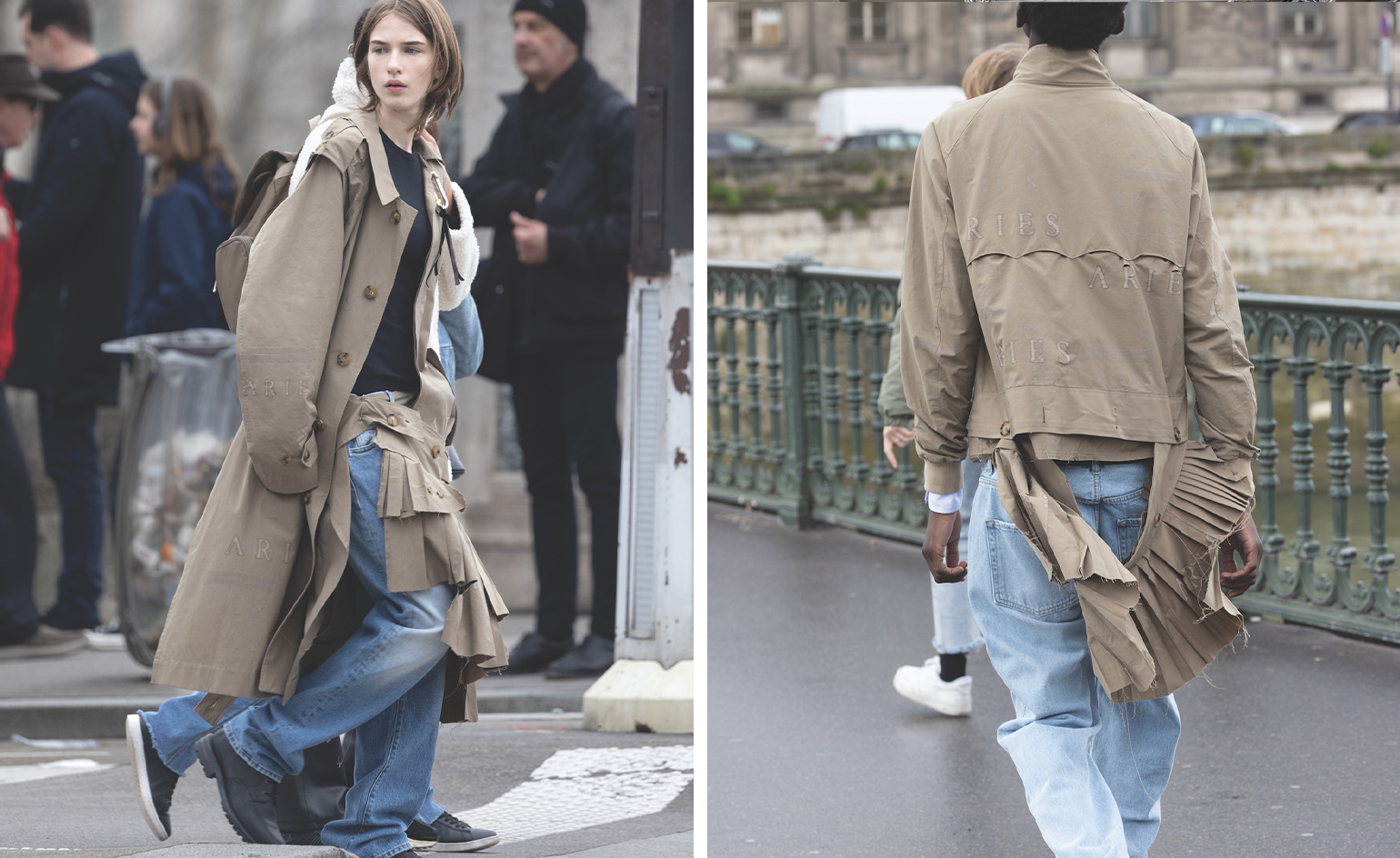
British streetwear brand Aries – known for its graphic 1980s- and 1990s-infused styles and Ancient Greek motifs – is the latest in a long line of collaborators to team up with heritage Manchester outerwear brand Baracuta, creator of the 1930s-born G9 Harrington jacket, a perennial stalwart of British style. Past collaborators include Junya Watanabe, Palace and Our Legacy, who each put their own imprint on the style – from Palace’s luminous Gore-Tex to patchwork tartan from Watanabe.
Led by Italian designer Sofia Prantera, a longtime luminary of the streetwear scene, Aries was founded in 2012 and is based in London, where it opened the first Aries store last year. ‘I think what I picked up from skateboarding is this DIY attitude to things – you don’t need everything to make something work, you just need an energy,’ she told Wallpaper* at the time. ‘When people say the death of streetwear, it’s just the death of a kind of streetwear – the type replicated by mass production. But it’s not the death of the spirit of streetwear.’
Aries
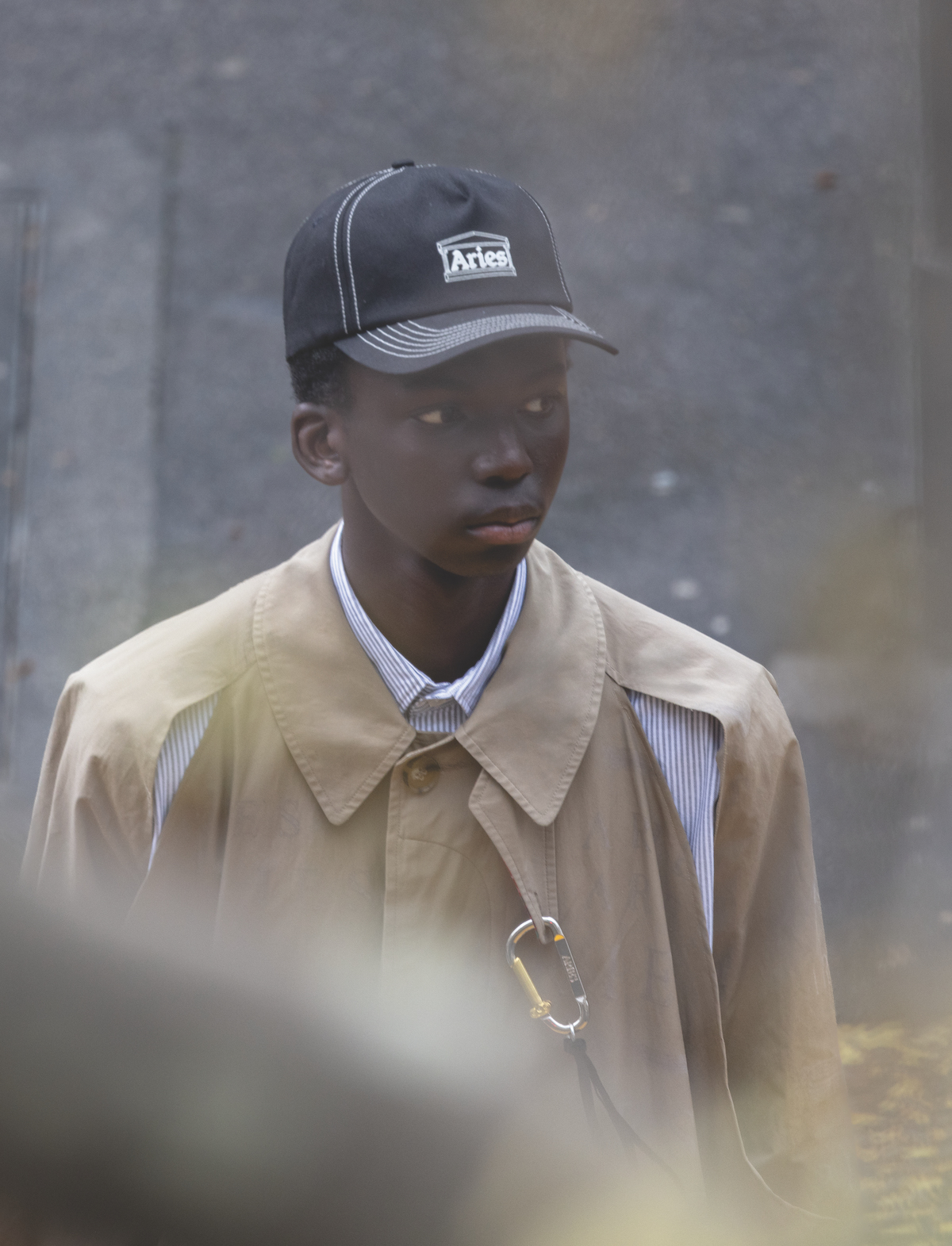
Prantera brings this distinctive approach to the new collection, which also marks the first-ever fully upcycled collaboration from Baracuta, seeing each of the pieces entirely sourced from deadstock jackets found in the archive. Here, they are ‘laser etched’ with Aries’ serif logo, as well as its signature Greek column motif. The collection comprises two styles, the G9 Harrington jacket and the G12 classic mac. Both largely retain the original garment’s shape and classic Fraser lining, updated with a detachable carabiner zip-up fastening (the carabiner is another Aries signature). As each piece is created from deadstock, no two jackets are the same.
The accompanying campaign is photographed by Paris-based photographer Winter Vandenbrink, featuring deconstructed versions of the two styles on a city street. Known for his lingering, voyeuristic lens, often photographing the subject from afar in urban environments, Aries says his style reflects the mood of the collection, one which clashes ’themes of gritty concrete with the softness of youth’.
The Aries x Baracuta collection is available from baracuta.com, ariesarise.com and the Aries flagship store in London’s Soho.
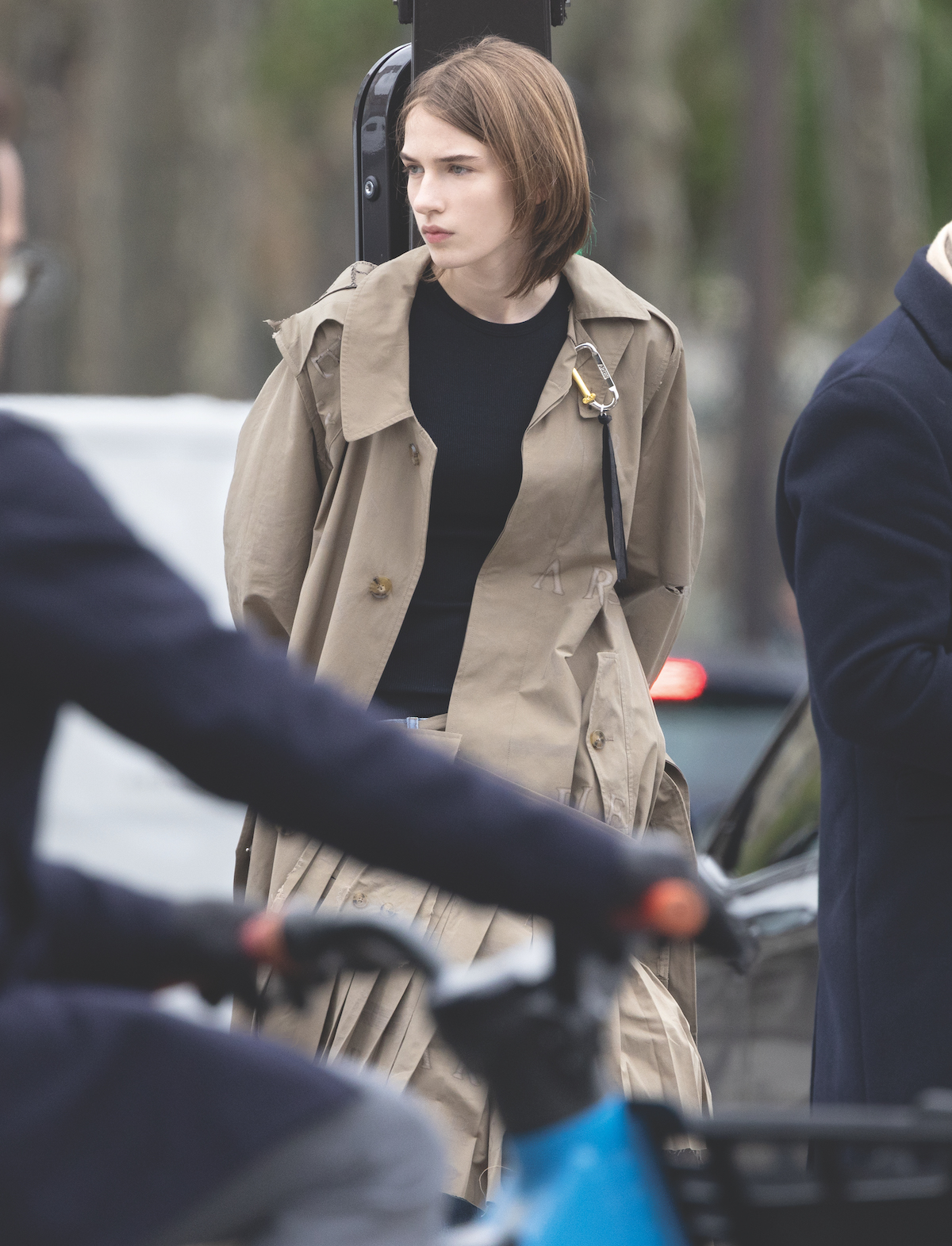
Wallpaper* Newsletter
Receive our daily digest of inspiration, escapism and design stories from around the world direct to your inbox.
Jack Moss is the Fashion Features Editor at Wallpaper*, joining the team in 2022. Having previously been the digital features editor at AnOther and digital editor at 10 and 10 Men magazines, he has also contributed to titles including i-D, Dazed, 10 Magazine, Mr Porter’s The Journal and more, while also featuring in Dazed: 32 Years Confused: The Covers, published by Rizzoli. He is particularly interested in the moments when fashion intersects with other creative disciplines – notably art and design – as well as championing a new generation of international talent and reporting from international fashion weeks. Across his career, he has interviewed the fashion industry’s leading figures, including Rick Owens, Pieter Mulier, Jonathan Anderson, Grace Wales Bonner, Christian Lacroix, Kate Moss and Manolo Blahnik.
-
 The Sialia 45 cruiser is a welcome addition to the new generation of electric boats
The Sialia 45 cruiser is a welcome addition to the new generation of electric boatsPolish shipbuilder Sialia Yachts has launched the Sialia 45, a 14m all-electric cruiser for silent running
By Jonathan Bell
-
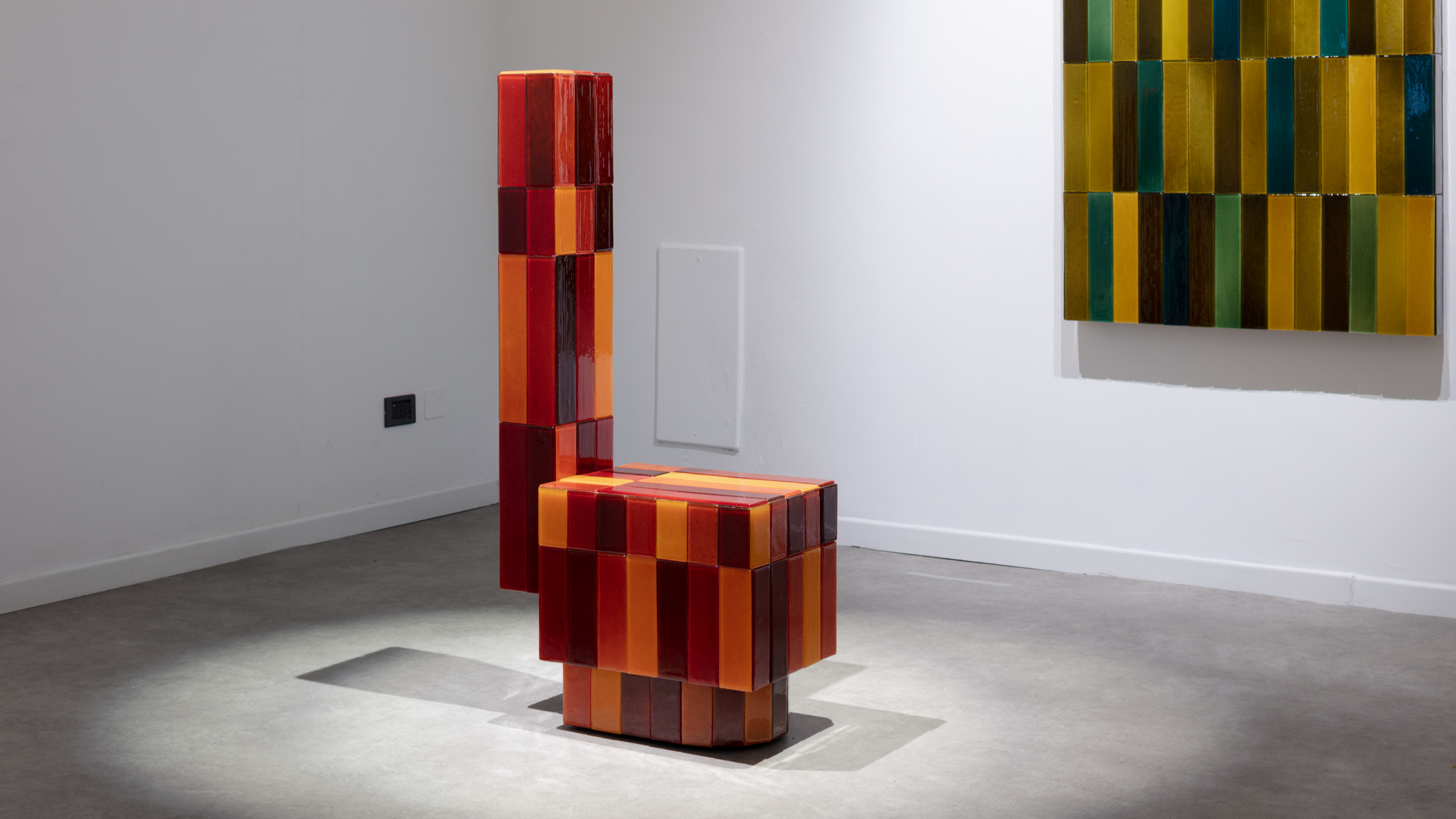 Tokyo design studio We+ transforms microalgae into colours
Tokyo design studio We+ transforms microalgae into coloursCould microalgae be the sustainable pigment of the future? A Japanese research project investigates
By Danielle Demetriou
-
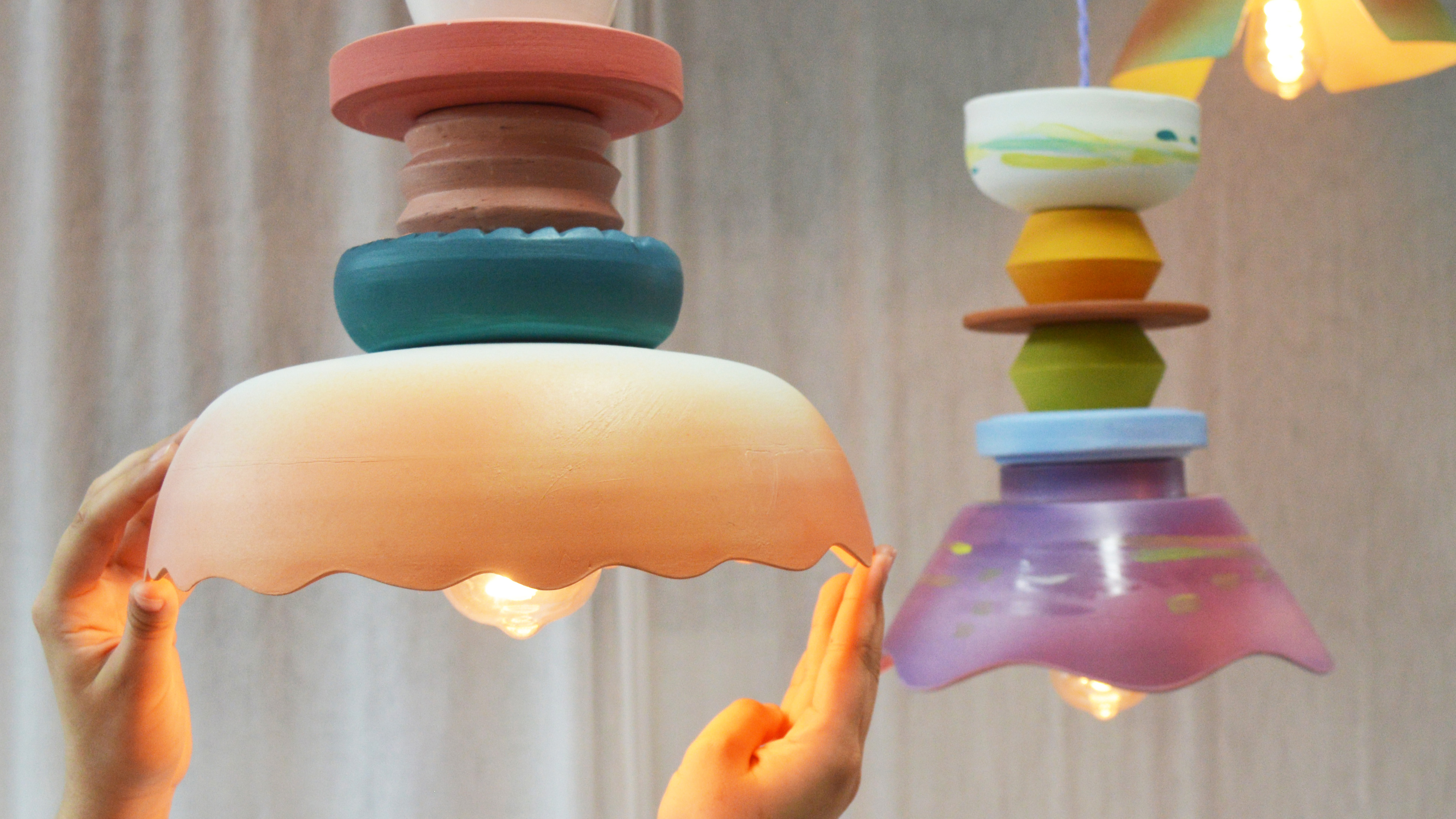 What to see at London Craft Week 2025
What to see at London Craft Week 2025With London Craft Week just around the corner, Wallpaper* rounds up the must-see moments from this year’s programme
By Francesca Perry